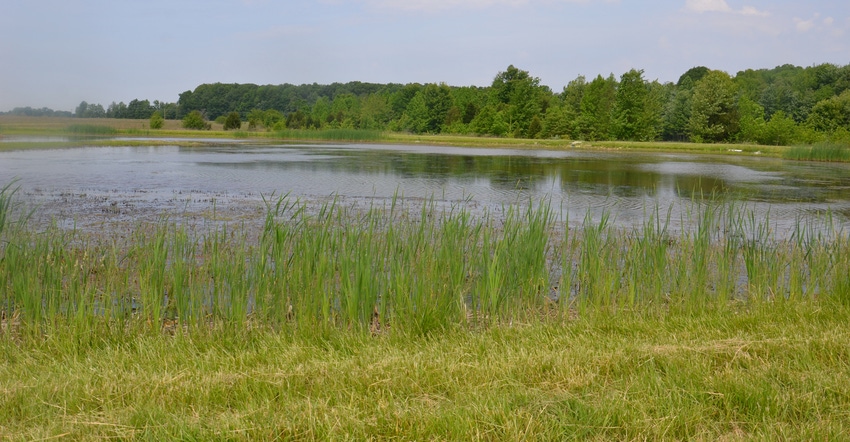
You can see the effects of tile lines and drainage because soils dry out, and water runs out of tile lines into creeks, ditches or streams. What you can't see are the nitrates that might be piggybacking along in the tile flow.
Those nitrates can wind up in the Gulf of Mexico and contribute to hypoxia, which creates a dead zone in the gulf, Dennis Bowman says. Because of this, water quality specialists in the Midwest are searching for ways farmers and landowners can voluntarily help reduce the amount of nitrates that leave their farms in tile water. Bowman is an Extension educator in commercial agriculture at the University of Illinois.
He recently presented 10 possible ways to reduce nitrates to a group of farmers. He based his comments on work by Laura Christianson at U of I, Jane Frankenberger at Purdue University, and other Midwest water quality specialists.
"Some of the recommendations are easier to implement than others,” Bowman said. “Wetlands and bioreactors require planning and investment but can be effective.”
2 practices
Here is a closer look at two of the practices Bowman discussed.
• Wetlands. Artificial or restored wetlands can reduce nitrate loads in waterways headed to the gulf in three ways, Bowman said. They increase denitrification of nitrates, increase plant uptake of the nutrient and reduce downstream flow.
The idea is to construct wetlands that are positioned to intercept subsurface drainage water coming from agricultural fields through tile, Bowman said. Wetlands tend to be more effective at reducing nitrates in the water in warmer months and when the flow is slow enough that denitrification can occur.
Christianson has identified four keys to making wetlands effective at nitrate removal. First, they need to be located so they’re intercepting flow from a drainage system fed by at least 500 acres of tiled cropland. Second, the size of the wetland should be no more than 0.5% to 2% of its drainage area. Third, no more than a fourth of the wetland should be greater than about 3 feet deep. Finally, a buffer of specific dimensions should surround the wetland.
• Bioreactors. You may not know it, but the Farm Progress Show site near Decatur, Ill., is one of the places where researchers have studied how bioreactors can reduce nitrates leaving a field. A bioreactor is simply a trench filled with a carbon source, Bowman said. It’s often filled with wood chips, but corn cobs and other materials have been tested, too.
A typical bioreactor uses an inlet control structure where water from the tile enters the bioreactor. At peak flow, water still flows into the bioreactor, while extra flow is diverted out the tile line.
Bioreactors work because they provide a feeding ground for bacteria to denitrify nitrates. “The average amount of nitrate reduction in a bioreactor system is about 30% to 40%,” Bowman said.
Learn more about bioreactors here.
About the Author(s)
You May Also Like




